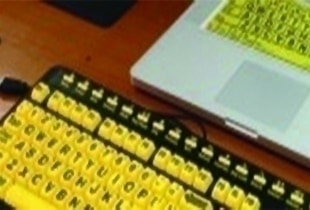Enabling Vision
How do you surf the internet if you are unable to see what’s on the computer monitor? How do you order at a restaurant if you are unable to read the menu?
There are several reasons why an individual may experience a visual impairment. A person may have an ocular vision impairment. The technology suitable for somebody with visual impairment will depend on the amount of residual vision. If there is sufficient residual vision, it can be augmented. In cases where residual vision is insufficient, vision is substituted by auditory or tactile methods.
Low- and Mid-Tech
These are handheld magnifiers, magnifier stands and screen magnifying lenses that are placed over the monitor. They are inexpensive, lightweight and need no training to use. However, they are limited by their magnification power and focusing may be difficult. Image distortions are a common problem.
Technology which Augment vision
Technology which augment vision do so by increasing the size of the image (magnification) or modifying the contrast. Devices which use this technology are close circuits televisions (CCTV), and screen magnifiers.
CCTVs
A typical CCTV consists of a camera, a video display screen, and a unit which controls the presentation of the image. The camera captures an image which is then processed to enlarge the image, or enhance its contrast before being displayed. Depending on the device, contrast may be changed to white on black instead of black on white; or a change in foreground and background colour.
CCTVs are available in the desk top model, portable model or handheld. The desk top models are usually large and heavy. However, they can be fitted with a larger monitor and some are able to split the screen between a CCTV and a computer screen. Portable CCTVs are light and can be easily transported for use at home and in school. They are frequently connected to a laptop. Handheld magnifiers are pocket size. They are useful for reading menus in a restaurant and are normally not used for reading large amount of text because of the limitations of the small screen.
Screen Magnifiers
Screen magnifiers enlarge the image on a computer screen. They can enhance the contrast of the image as well. There are generally three viewing modes screen magnifiers present the enlarged image: full screen, docked and lens. In the full screen mode, the entire screen is magnified leading to loss of some areas of the screen. In docked mode, the screen is divided into two, one where the image is magnified and the other where the image is in its original size. The lens option provides a magnified image in a box around the cursor or mouse arrow, giving users an idea of which part of the image they are looking at.
OCR
Auditory feedback allows a user to listen to the material instead of reading it visually. Tactile feedback allows the user to feel the Braille dots instead. In order to convert a printed material to speech or Braille, a camera or scanner is used to pick up the image consisting of an array of pixels. These pixels are then converted to speech or Braille using Optical Character Recognition (OCR) software. Speech is produced via the computer speakers. Braille is represented by a series of dots which can be substituted using raised pins called refreshable Braille display.
Screen Readers
For a computer user who has difficulty reading the screen despite magnification and contrast, voice synthesisers or refreshable Braille display provide auditory and tactile substitution respectively. Systems that use voice synthesis are also called screen readers. Screen readers read the text and the description for graphics on the screen. Screen readers also read out message prompts for the user input.
Sighted computer users tend to scan the screen for a sense of the subject matter and open multiple windows. Screen readers duplicate this capability by providing a list of windows, headers, and links allowing the user to work with multiple windows or scan the headers for sense of the subject matter.
Digital Talking Books
Audio information can be recorded on CD-ROM or CD. Books loaded in a CD would allow the user to perform searches for a desired item or place in the text. In a digital format, it can also use speech output from the computer to read from the CD. The DAISY consortium, an international group, has developed standards for accessible and navigable digital talking books to meet a variety of reading needs.
Cortical Visual Impairment
Some individuals may have Cortical Visual Impairment (CVI) is diagnosed when children show abnormal visual responses that aren’t caused by the eyes themselves. Typical causes of CVI hyproxia, asphyxia or ischemia.
CVI is often difficult to diagnose but it is prevalent in many individuals with Special Needs. Technology and strategies used for individuals with cortical visual impairments are different from those used to treat ocular impairments. It is important that we are able to distinguish them from ocular impairments so that we can provide the appropriate intervention for these individuals with CVI. For more on CVI, please click on the following link:
Conclusion
There are a variety of ways a person can read or use the computer. Low- and mid-tech devices have limited magnification power and focusing may be an issue. High-tech devices offer greater magnification, contrast, and auditory and tactile feedback.

